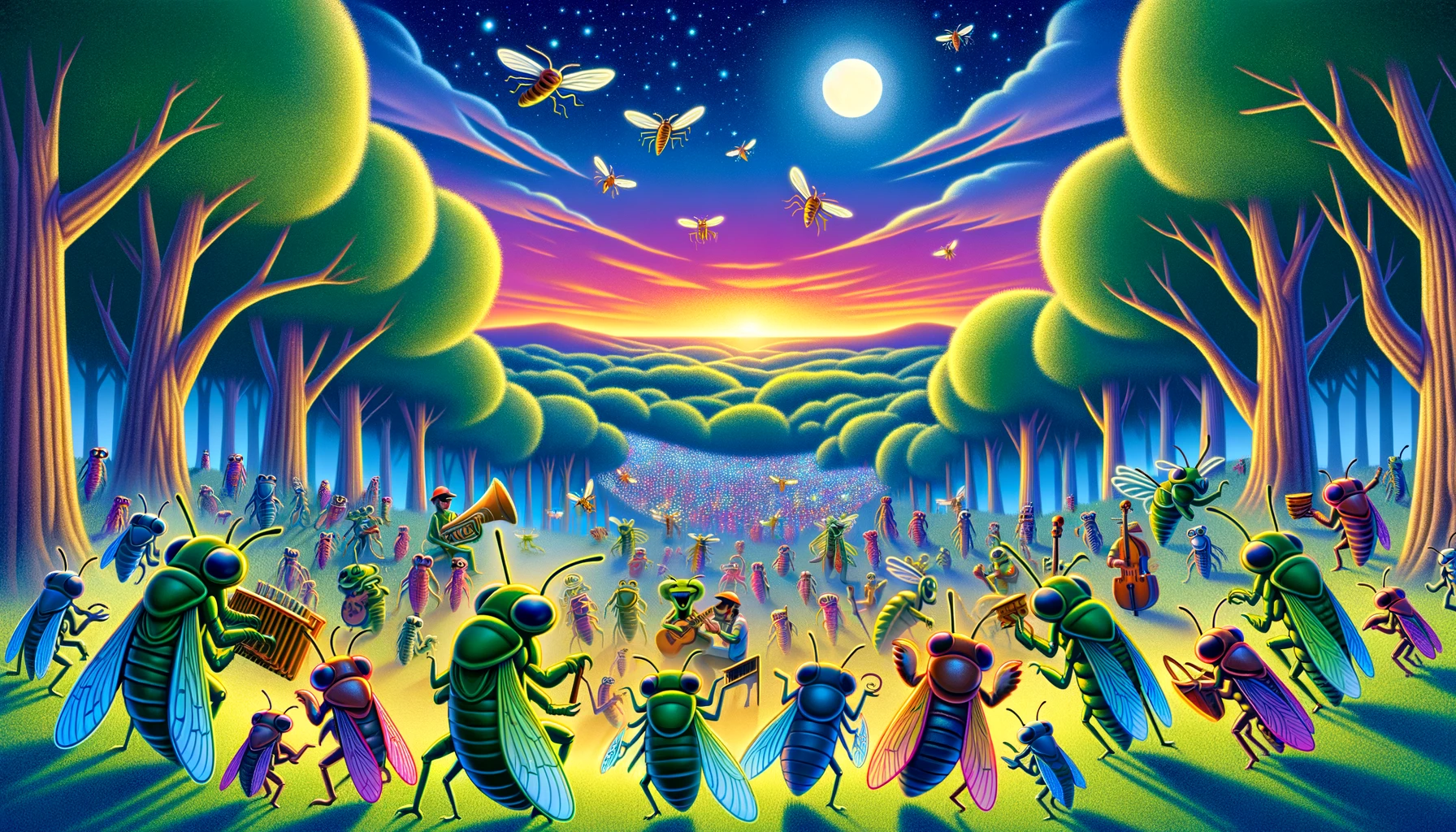This year, the familiar sound of cicadas is about to become a massive chorus, unlike anything anyone alive today has ever heard. This isn’t your average summer. We’re about to witness a rare event where billions, maybe even trillions, of cicadas will emerge all at once.
Cicadas are those buzzy insects you hear every summer, but there are special ones called periodical cicadas that only come out every 13 or 17 years. And guess what? Two different groups of these cicadas are deciding to throw a massive party and emerge at the same time. The last time this happened was 221 years ago – that’s way before anyone thought about electricity, and people were still getting around in horse-drawn carriages.
Let’s dive into the details of this incredible natural phenomenon that’s about to unfold:
When and Where is This Happening?
Late May or early June is the big time for cicadas. They’ve been chilling underground, and they decide to come up when the soil about seven inches deep hits 64 degrees Fahrenheit. This usually happens when the air is consistently in the low 70s. Depending on where you are in the Midwest, especially in Illinois, you might see them a bit earlier or later, but they’re coming!
These special cicadas will be popping up in different parts of Illinois. The 17-year group will be making their grand entrance in the northern part, while the 13-year group will show up in the south. They’re going to meet around Springfield, but don’t expect to see double the amount because they don’t really mix.
Even though they sound identical and look the same to most of us, these cicadas are quite the event in Illinois. According to John Cooley, a cicada expert, Illinois is like the main stage for this bug bonanza.
Just How Many Will There Be?
Imagine this: up to one million cicadas per acre. With Illinois’ vast spaces, we’re talking billions, maybe even trillions of these insects. It’s hard to wrap your head around, right?
Why is This Year So Special?
Cicadas are pretty common worldwide, with thousands of species. But the ones making an appearance this year are unique because they only show up every 13 or 17 years. The last joint party like this was in 1803. This event is so rare that the next time we’ll see something like it won’t be until 2245!
Can They Mix and Match?
You might wonder if these different groups of cicadas could interbreed and create a new 15-year cycle. But scientists say that’s unlikely. Any hybrid cicadas would just follow either the 13 or 17-year cycle, not a cycle of the average length between the two cycles.

What Do They Look Like and What’s All the Noise About?
Periodical cicadas are about an inch long with striking red eyes and orange wings. They make a lot of noise, which is actually the males singing for mates. This “singing” can be as loud as a lawnmower!
What’s the Deal with Them Being Underground?
Cicadas start their lives by burrowing underground where they hang out for 13 or 17 years. They’re not just lounging around; they’re feeding on plant roots. When it’s time, they emerge, mate, lay eggs, and the cycle continues.
Are They a Problem?
Not at all. Cicadas are harmless to people and most wildlife. They can be a nuisance for young trees, but other than that, they’re just part of nature’s cycle. And yes, you can eat them – they’re considered a delicacy in some recipes, but watch out if you have seafood allergies.
What About the Environment?
Cicadas actually benefit the ecosystem. Their emergence is a feast for many predators, and once they die, they return nutrients to the soil. However, climate change could affect their cycles, making them emerge earlier or potentially harming them if a cold snap follows a warm period.
This article is based on the following article:

Background Information
With this background information, the reader should have a better understanding of the cicada emergence event described in the article. This natural phenomenon highlights the wonders of the natural world and the intricate life cycles that operate within it.
1. What Are Cicadas?
Cicadas are insects known for the loud, buzzing noises that males make to attract females. They belong to the order Hemiptera, which includes bugs that have piercing and sucking mouthparts. Cicadas are divided into two main types: annual (or dog-day) cicadas and periodical cicadas.
2. Annual vs. Periodical Cicadas
- Annual Cicadas: These cicadas appear every year, typically in late summer. They have a life cycle of 2 to 5 years, but because their populations overlap, some emerge each year.
- Periodical Cicadas: These are the stars of our story. They spend most of their lives underground as nymphs and emerge all at once every 13 or 17 years, depending on the species. They are known for their synchronized life cycles and massive emergences.
3. Life Cycle of Periodical Cicadas
The life cycle of periodical cicadas consists of four stages: egg, nymph, pupa, and adult. After mating, the female lays eggs in tree branches. When the eggs hatch, the nymphs fall to the ground and burrow underground, where they will spend the next 13 or 17 years feeding on sap from tree roots. When it’s time to emerge, they dig their way out, molt (shed their exoskeleton), and become adults ready to mate, starting the cycle over.
4. The Significance of the 13 and 17-Year Cycles
The 13 and 17-year cycles are fascinating to scientists because they are prime numbers. One theory is that these prime-numbered cycles help cicadas avoid syncing up with the life cycles of predators, giving them a survival advantage.
5. Broods
Periodical cicadas are grouped into broods based on the year they emerge. Each brood is identified by a Roman numeral. There are 15 different broods of 17-year cicadas and 3 broods of 13-year cicadas. The emergence of two different broods simultaneously, as described in the article, is an extremely rare event.
6. The Ecological Role of Cicadas
Cicadas play an essential role in their ecosystems. While underground, they aerate the soil, and their emergence provides a significant food source for various predators. After they die, their bodies decompose and enrich the soil with nutrients.
7. Climate Change and Cicadas
Climate change could impact cicadas in several ways, including altering the timing of their emergence. Warmer soil temperatures could cause cicadas to emerge earlier than expected, which could affect their survival if they encounter late spring frosts.
8. Human and Cicada Interactions
Cicadas are harmless to humans and do not bite or sting. Their emergence is often celebrated or observed with interest due to its rarity. In some cultures, cicadas are even eaten as a delicacy.
Please subscribe to Insight Fortnight, our biweekly newsletter!
